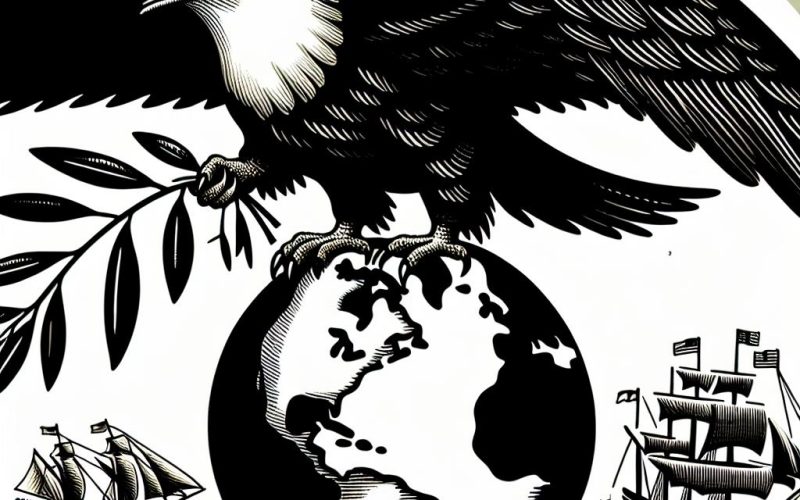Overview of U.S. Involvement in Central American Politics
The involvement of the United States in Central American politics extends back more than a century and stems from a variety of motivations. These include economic interests, geopolitical strategies, and the ambition to promote democratic values in the region. The deep-rooted presence of the U.S. in Central America is crucial to understanding the ongoing political dynamics and the relationships shared between these nations today.
Historical Context
The roots of U.S. engagement in Central America can be traced back to the late 19th and early 20th centuries. This era witnessed a wave of economic imperialism, with American companies investing significantly in sectors such as agriculture and mining. These investments not only shaped the economic landscape of the region but also necessitated political stability and favorable policies to safeguard U.S. interests.
Fast forward to the era of the Cold War, and we see an intensification of U.S. involvement. The geopolitical strategy was dominated by an anti-communist stance. During this period, Central America transformed into a crucial battleground where ideological influences, especially those related to communism, were fiercely contested. This opposition led the U.S. to frequently support governments or factions that were against communist regimes, further complicating the region’s political landscape.
Key Episodes in U.S. Intervention
Several significant episodes highlight the extent of U.S. intervention in Central America:
Guatemala, 1954: One of the most telling examples of U.S. intervention is the 1954 coup in Guatemala. The CIA orchestrated this coup to overthrow President Jacobo Árbenz. The motivation behind this action lay in American fears of communist expansion within Central America, as well as concerns over the nationalization of properties that negatively impacted American business interests.
Nicaragua, 1980s: Another significant event was the U.S. funding of the Contras in Nicaragua during the 1980s. The Contras were a group opposing the Sandinista government, which had established relations with communist entities. This intervention evolved into a covert operation that significantly impacted U.S. politics, eventually culminating in the Iran-Contra Affair, an important scandal in U.S. history.
El Salvador, 1980s: The U.S. also played a considerable role in El Salvador during its civil war. By providing military aid to the Salvadoran government in its battle against leftist guerrillas, the U.S. endeavored to restrict Soviet influence in the hemisphere, clearly showing the weight of geopolitical strategy in its foreign policy.
Motivations Behind U.S. Actions
The motivations fueling U.S. actions in Central America are multi-faceted and can be understood through several lenses:
Economic Interests: A primary motivation has been the protection of American investments and the maintenance of trade routes. Given Central America’s rich agricultural and industrial resources, safeguarding these economic interests has consistently been a priority.
Geopolitical Strategy: Particularly during the Cold War, the U.S. aimed to contain the spread of ideologies contrary to its values, with communism being the main focus. This strategic outlook governed much of the U.S. engagement in the region.
Security Concerns: The physical proximity of Central America to the United States makes regional stability pivotal to American national security. This geographical factor invariably influences foreign policy directions and decisions.
Promotion of Democracy: The U.S. has frequently articulated a commitment to nurturing democratic governance in Central America. Although this motivation is often secondary to other interests, in some contexts, it has played a significant role.
Current Dynamics
The U.S.’s focus in Central America has evolved in recent decades. Presently, attention is directed towards issues like drug trafficking, immigration, and economic development. Initiatives such as the Alliance for Prosperity reflect efforts to invest in the region’s stability and foster economic growth. The ambition here is to address root causes of migration and to nurture improved bilateral relations.
For those interested in delving deeper into U.S. foreign policy and its implications, resources from organizations like the Council on Foreign Relations or governmental publications from the U.S. Department of State can offer comprehensive information and perspectives.
The historical interventions by the U.S. have undeniably left a complex legacy in Central America. However, contemporary U.S. policies strive to balance the lessons learned from past actions with the evolving political and social landscape of today. Through a composite approach that encompasses respect for sovereignty, promotion of economic development, and support for democratic institutions, the U.S. aims to work collaboratively with Central American nations in addressing both longstanding and emergent challenges. This nuanced engagement reflects both an acknowledgment of historical complexities and a commitment to shared futures.
